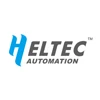Thanks
@Steve_S
Do you have a specific BMS recommendation, and where to source it?
I stopped recommending BMS' because when someone bought one, messed up, they'd blame me for suggesting it to them. Sadly, too many folks have zilch ideas about fine electronics, static electricity and common sense. Or worse having the BMS harness connected to the BMS when they are attaching the leads to cells (75% chance of Smoking the BMS). RTFM is not in those peoples vocabulary, they are "Instant Rice Society " folks.
I myself use Chargery BMS8T-300A with Chargery SolidState 300A DCC (Contactors) which were designed and built from our user input here.
This is a Relay/Contactor controlling BMS NOT FET Based board. Being in the deep north and subject to -35C/-31F I had to have Cold Temp cutoff, which Chargery reprogrammed their BMS' to handle it for us. One of the Very Rare Few who interact with clients, listens & HEARS what is wanted & needed. (and to think some hostile morons shooed him out of here because "they" had issues, so he only pops in rarely now). not one did RTFM, or they used selecting reading and skipped things making assumptions. Will being one of them who decided to calibrate the shunt when not needed failed to follow the instruction, got frustrated and slammed the company & product in his Videos, he also used the old Chinglish Manual instead of my rewritten English one, which I will not do again).
The GOTCHA's: FET Based BMS' are only now starting to reach 200-250A and they MUST be derated by 20% because the specs are to the "edge capacity" and it is never good to push them that far. When they fail it is fugly. Relay/Contactor system with N.O. (Normally Open) Relays or Contactors if they fail, they won't stay ON (safer). That being said, the higher end FET BMS' are pretty good now, compared to a year ago when they were extremely rare.
DIY Gotcha. Because we DIY we have to use more "generic" BMS' because they have to be flexible & adjustable to various use cases. Unlike EV's or Tesla Powerwalls and such which have very specialized BMS' specific to the application, we get to deal with Compromises ! That means there is "no perfect solution" and always certain quirks, foibles will be apparent. Does not matter if it a $100 cheapo BMS of a $1000 Orion Setup, generic = compromises.
BMS' used by folks here are DALY (I do not like them AT ALL), JBD/Overkill also rebranded by many, HelTec, QUCC, TinyBMS, RECbms, OrionBMS going from cheaper to ludicrousness.
Chargery power is a professional manufacturer in the global R/C market and E-Vehicle market in China. Chargery charger, balancer, balance charger, adapter and battery packs are designed and built to the most rigorous standards in the industry. As a rising new star, Chargery power provides...

www.chargerystore.com
Smart BMS from Dongguan Jiabaida Electronic Technology Co., Ltd.. Search High Quality Smart BMS Manufacturing and Exporting supplier on Alibaba.com.

dgjbd.en.alibaba.com
Alibaba Manufacturer Directory - Suppliers, Manufacturers, Exporters & Importers

cncdheltec.en.alibaba.com
Shopping for Cheap Group at QUCC Official Store and more from on Aliexpress.com ,the Leading Trading Marketplace from China

www.aliexpress.com
Integrate the most modern battery technology in hours, not years. Battery management systems, Li-ion modules.
www.energusps.com

rec-bms.com
NOTE: BMS with Balancing !
Passive Balancing is intended only for Matched, Batched & Binned cells and for Low Capacity cells 50AH or less. It only burns off High Voltage from cells.
Active Balancing transfers High Voltage to Low Voltage cells and they come from 1A to 10A transfer capabilities. Higher the amperage capability = more $$$$
Even though I have Chargery with Passive Balancing @ 1.2A it is not enough. They are finalizing their new P series with Active Balancing. In my case, I have a
QNBBM-8S Active Balancer on every pack, even the newest one with Fully Matched & Batched cells.
For more info, details & docs/resources, please follow the links in my signature. "About my System" may also help with seeing how that is done and there is even more REF info in there too.
Hope it helps, Good Luck









